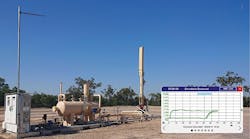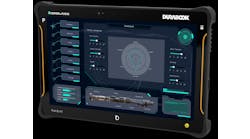The edge is just somewhere else, but like a lost hiker, trying to find it takes you in a circle. Just as orbiting is falling without crashing because sufficient altitude means the ground falls away too quickly for impact, edge computing is also like early navigators discovering their expected, flat-earth, dragon-haunted boundary wasn't there either.
So, edge computing is in the eye of the beholder because its definition depends largely on the location of who's describing it. Some end users and system integrators say the edge is where sensors, instruments, analyzers and other device-level components run in the field and on the plant floor, while others add it's where input/output (I/O) points, programmable logic controllers (PLCs) and historians perform their tasks. Others report the edge is the boundary between operations technology (OT) and information technology (IT) realms, or between the physical and digital realms, while some argue the edge is everything that's not running in the cloud, namely on a server as part of a computing service.
From most of these angles, the common thread is that edge computing begins where production occurs. For example, Santos' Gladstone Liquefied Natural Gas (GLNG) in Queensland, Australia, converts natural and coal seam gas from the Bowen and Surate basins into LNG for export to Asia, and uses a 420-km underground pipeline to Gladstone and two-train liquefaction and 7.8 mtpa storage facility in Curtis Island. To future-proof production, Santos recently worked with system integrator Atsys in Adelaide, Australia, to upgrade its progressing cavity pump (PCP) and linear rod pump (LRP) wellhead skids, and their separators and motor controls (Figure 1). The skids needed faster communications between their drives and controllers to get precise, real-time torque and position measurements of their pumps, perform gas flow calculations, relay diagnostics to remote users, and simplify and speed up commissioning. Remote terminal units (RTU) usually linked controls and drives on the skids, but a pilot project and field testing by Atsys and Santos showed they could use more flexible PLCs if they could interact fast enough with the drives.
“While the pump is operating, we need a high-speed sampling rate to ensure the accuracy of the dynacards, which plot the pump load against position, allowing us to perform advanced control functions,” says Alex Gibson, principal control systems engineer at Atsys. "The PLCs provide flexibility and can perform AGA3 gas flow calculations in this control application."
Atsys and Santos implemented Rockwell Automation's PowerFlex 753 drives and Allen-Bradley CompactLogix PLCs on the skids. Remote diagnostics were built-in with analog I/O and HART connectivity from Spectrum Controls. Commissioning that used to take days per wellhead can now be done in hours because the skids are built, configured and tested offsite, and employ automatic PLC and drive setup with SD cards. Successful pilots and field tests in the PCP and LRP wellhead inspired Santos to rollout this new PLC-based design in about 400 skids last year.
This article is part of a series covering edge computing. Read the rest of the series now.
Finding the boundary
Even though edge computing calculations can be performed anywhere, Nate Kay, PE, senior project engineer at Martin CSI, reports that Martin CSI defines the edge as the boundary between operations technology (OT) and information technology (IT) because it's where its edge devices are located, along with its firewalls and network address translation functions for establishing interfaces between OT and IT. Martin CSI is a system integrator in Plain City, Ohio, and a certified member of the Control System Integrators Association (CSIA).
"Edge devices straddle the OT side's processes, sensors, machines and PLCs, and bridge to the IT side's networks and business systems," says Kay. "We process data at the edge, such as turning revolutions-per-minute and other raw measurements into meaningful insights, and pumping them up to the cloud. We use a variety of hardware for this, including Phoenix Contact's mGuard, Red Lion's Data Station Plus, Opto 22's groov EPIC and Inductive Automation's Ignition Edge platform on a small PC. Each client decides what information must go to the cloud, but calculating and getting data into a consistent format and standardized database on the edge can save processing power and revenue because users aren't simply dumping all their raw data onto a cloud-based database before sorting it."
Because edge devices can employ MQTT or other standard protocols, handle different languages and translations, and process more data locally, Kay explains that Martin and its clients can advance beyond their initial overall equipment effectiveness (OEE) projects. "We can perform more complex calculations, use algorithms to look at data in different ways, and extract intelligence we never had before," says Kay. "For example, vibration data or current draws can be collected from all the lines and equipment in a plant, performance and failures can be correlated, and predictive models that look much further in advance can be developed more easily. We even have a IIoT interest group working on this now."
Backstory from the sticks
Because talking about edge computing as "everywhere and nowhere" shows it's just another buzzword, more useful definitions and concepts can be gained by examining its history. Of course, there have always been sensors, instruments, analyzers, I/O points, motors and drives, RTUs and PLCs to keep production going on plant floors or out in the field, but these regions only became "the edge" when they gained microprocessors, software, Ethernet ports and networking. In addition, early and optimistic stabs at distributed control about 20-25 years ago were typically unsuccessful in the mainstream because of all the data conversion, customized programming, incompatible components and network protocols, and other hurdles required. Nonetheless, they did point the way for subsequent efforts, which accelerated as microprocessors and software gained speed and power, and Ethernet paved the way for them to overwhelm former barriers.
"We have an interest group that's been working on data collection and analysis for about 15 years, but it recently morphed into focusing on edge computing. As a result, we've seen it go from data collection and analysis for OEE over legacy networks to projects involving Industrial Internet of Things (IIoT) technologies," says Kay. "We began with OEE, analyzing information from machines and creating targets based on actual production data, but it evolved as Ethernet and the Internet got more involved on the network side and every machine got a computer. This allowed us to connect to them and their plants, and let them connect to each other. We usually installed data concentrators and hubs using a common data format, such as combining our custom code with a CompactLogix PLC to take once-per-minute snapshots of performance data, and perform OEE calculations. The data concentrator would span all the machines at a site, and buffer the data from them, so they wouldn't hit the IT server too hard."
Kay adds Martin's initial data collection and OEE projects eventually became part of its regular services, and kept modernizing until they recently started monitoring mobile equipment for an oil and gas customer. "We began migrating to virtual servers like VMWare about five years ago, and we've set up virtual servers running in the cloud. This lets users have a machine network that can get on the Internet securely, and allows them to access data over Wi-Fi and cellular links to their equipment. We still use data concentrators and PLCs to gather raw data, but it's gotten easier to deliver information to servers and the cloud."
In the past several years, Kay reports more operators and process engineers have been seeking to adopt mainstream, IT-driven technologies like mobile software apps and cloud-based databases. "While some engineers still don't want Ethernet on their plant floors, there's also a new crop entering the manufacturing workforce that are accustomed using mobile apps, and want their industries to use more of these technologies. They want same apps for their operations and plants that they use for banking on their smart phones," says Kay. "We use off-the-shelf, web-based SCADA software like Ignition to make apps that can run on mobile devices, and use KepServer software for Internet-based dashboards. We're also working to combine features in Ignition 8 Perspective software with features like GPS and accelerometer data to enable HMIs and control apps on tablet PCs and smart phones."






